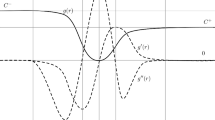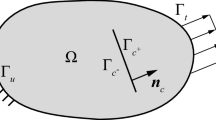Abstract
The breaking of solid objects, like glass or pottery, poses a complex problem for computer animation. We present our methods of using physical simulation to drive the animation of breaking objects. Breakage is obtaned in a three-dimensional flexible model as the limit of elastic behavior. This article describes three principal features of the model: a breakage model, a collision-detection/response scheme, and a geometric modeling method. We use networks of point masses connected by springs to represent physical objects that can bend and break. We present effecient collision-detection algorithms, appropriate for simulating the collisions between the various pieces that interact in breakage. The capability of modeling real objects is provided by a technique of building up composite structures from simple lattice models. We applied these methods to animate the breaking of a teapot and other dishware activities in the animationTipsy Turvy shown at Siggraph '89. Animation techniques that rely on physical simulation to control the motion of objects are discussed, and further topics for research are presented.
Similar content being viewed by others
Explore related subjects
Discover the latest articles, news and stories from top researchers in related subjects.References
Barzel R, Barr A (1988) A modeling system based on dynamic constraints. ACM Comput Graph SIGGRAPH 22 (4)
Bentley JL, Friedman JH (1979) Data structures for range searching. Comput Surveys 11 (4)
Crandall SH, Dahl NC, Lardner TJ (1978) An introduction to the mechanics of solids, 2nd Ed. McGraw-Hill, New York
Feynman RP, Leighton RB, Sands M (1965) The Feynman lectures on physics, Vol. 2. Addison-Wesley, Reading, Mass (esp chapters 38 and 39)
Hahn JK (1988) Realistic animation of rigid bodies. Comput Graph 22(4) 299–308
Hart J, Norton A (1990) Use of curves in rendering fractures. Proc Curves and Surfaces, Comput Graph
Kay T, Kajiya JT (1986) Ray tracing complex scenes. Comput Graph 20(4) 269–278
Miller GSP (1988) The motion dynamics of snakes and worms. Comput Graph 22(4) 169–178
Moore M, Wilhelms J (1988) Collision detection and response for computer animation. Comput Graph 22(4) 289–298
Pentland A, Williams J (1989) Good vibrations: modal dynamics for graphics and animation. ACM Comput Graph SIGGRAPH 23(3) 215–222
Platt J, Barr A (1988) Constraint methods for flexible models. Comput Graph 22(4) 219–288
Press WH, Flannery BP, Teukolsky SA, Vetterling WT (1988) Numerical recipes in C: the art of scientific computing. Cambridge University Press, Cambridge
Raibert M, Brown HB Jr, Chepponis M (1984) Experiments in balance with a 3D one-legged hopping machine. Int J Robotics Research 3(2)
Terzopoulos D, Platt J, Barr AH, Fleischer K (1987) Elastically deformable models. Comput Graph 21(4) 205–214
Terzopoulos D, Fleischer K (1988) Modeling inelastic deformation: viscoelasticity, plasticity, fracture. Comput Graph 22(4) 269–278
Terzopoulos D, Witkin A (1988) Physically based models with rigid and deformable components. IEEE Comput Graph Appl 8(6)
Witkin A, Kass M (1988) Spacetime constraints. Comput Graph 22(4) 159–168
Witkin A, Welch W (1990) Fast animation and control of nonrigid structures. ACM Comput Graph SIGGRAPH 24(4) 243–252
Author information
Authors and Affiliations
Rights and permissions
About this article
Cite this article
Norton, A., Turk, G., Bacon, B. et al. Animation of fracture by physical modeling. The Visual Computer 7, 210–219 (1991). https://doi.org/10.1007/BF01900837
Issue Date:
DOI: https://doi.org/10.1007/BF01900837





